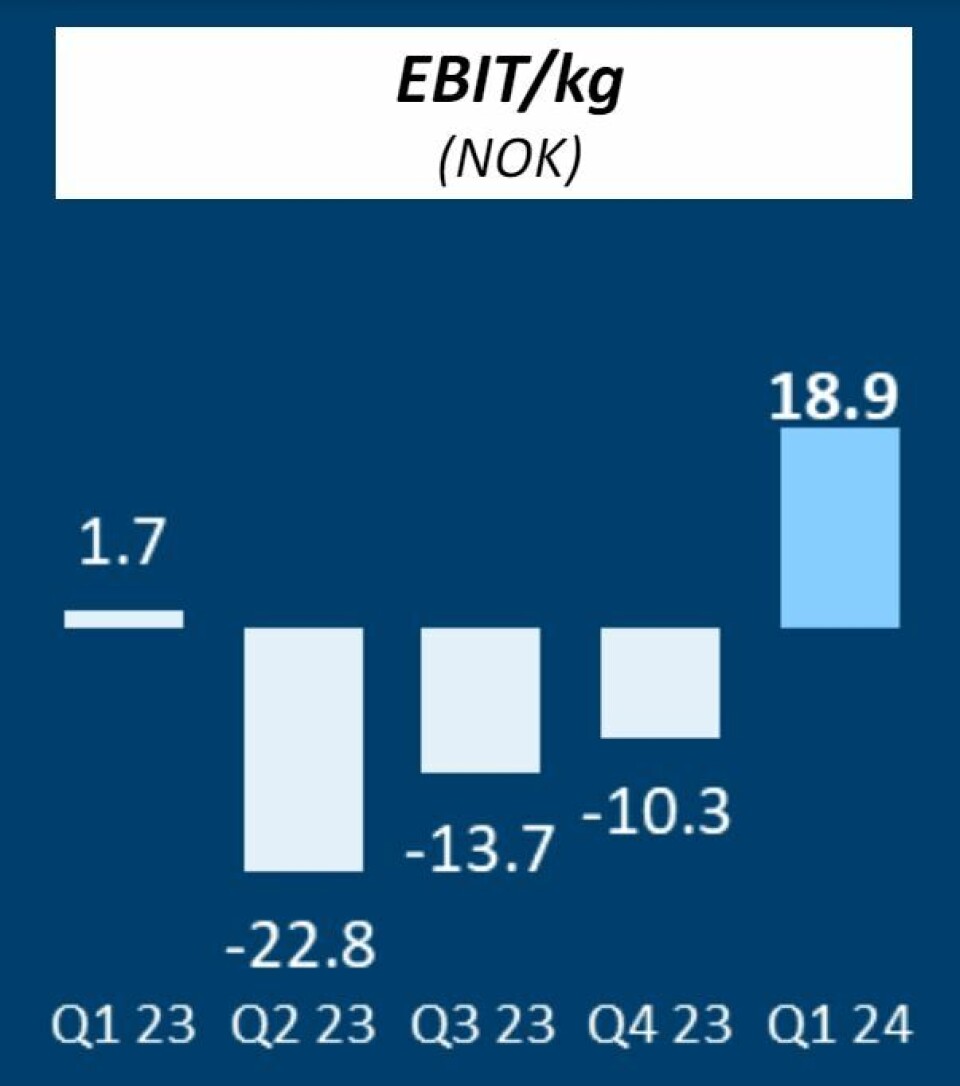
Scottish Sea Farms back in the black after tough 2023
Salmon farmer made operating profit of £10.2m in Q1 and remains on course for 37,000 tonne harvest
Scottish Sea Farms made an operating profit of NOK 138 million (£10.2m) in the first quarter of this year after recording operating losses in the last three quarters of 2023.
Co-owner SalMar said that after several challenging quarters the results improved significantly due to improved biological conditions in all regions.
Scottish Sea Farms (SSF), which farms off the west coast, Orkney, and Shetland, harvested 7,300 gutted weight tonnes in Q1 2024, up from 5,200 gwt in the same period last year.
Good biology
SSF’s operating revenues were NOK 848m (Q1 2023: NOK 506m). Nearly half (45%) of the volume was sold on contracts which made a negative contribution to the result.

EBIT per kg gutted weight was NOK 18.9 in the period, a huge increase from NOK 1.7 per kg in the corresponding period last year.
“The company expects continued good biological situation
going forward with lower costs in the second quarter 2024,” said SalMar.
SSF’s harvest volume guidance for 2024 is kept unchanged at 37,000 gwt.
Jellyfish attacks
In Norway, harsh winter conditions, extreme weather events and continued jellyfish attacks had adverse effect on SalMar’s farming segments in Q1 and impacted the company’s results.
Operational EBIT for Northern Norway was NOK 476m, down from NOK 837m in Q1 2023, and harvest volume in Northern Norway fell from 19,800 gwt to 17,500 gwt.
In Central Norway, operational EBIT was NOK 1.186 billion (NOK 1.109bn) on a harvest of 27,800 gwt (22,200 gwt).
Operational EBIT per kg in Norway was NOK 34.1.
Challenges in Iceland
SalMar’s Icelandic Salmon subsidiary made an operating loss of NOK -2m on a harvest of 2,800 gwt.
“The result is negatively affected by biological challenges,” wrote SalMar. “A one-off cost related to the challenges of EUR 3.6 million or NOK ~15 per kg has affected the result in the period.”
The Salmon Living Lab innovation and R&D centre which was launched by SalMar in Q1 has attracted broad interest from potential partners, said the company.
“The first quarter was challenging in many ways, and we were once again reminded of the importance of working with the forces of nature,” said chief executive Frode Arntsen.
“Our ability to understand biology and the environment is of great importance for our operational and financial performance. That is why we believe so strongly that our many improvement initiatives, including Salmon Living Lab, are important for the continued success of our company and our industry as a whole.”
High survival offshore
SalMar’s offshore farming joint venture, SalMar Aker, harvested a total of 4,800 gwt from its two semi-offshore projects – Arctic Offshore Seafarm (AOF) and Ocean Farm 1 (OF1) – during the quarter and reported strong biological performance. Production cycle survival in AOF – where fish were introduced at 2kg and harvest six months later - was calculated at 96%, and at 93% in OF1, where smolts were stocked at 500g and harvested after 10 months.
There was one sea lice treatment required in OF1 and none in AOF.
Low utilisation of capacity in OF1 affected costs per kilo, and the segment made an operating loss of NOK -5.9m for the quarter.
SalMar’s volume guidance for 2024 remains unchanged at 237,000 gwt in Norway, 7,000 gwt from SalMar Aker Ocean, 15,000 gwt in Iceland and 37,000 gwt in Scotland (of which SalMar owns half, and SSF co-owner Leroy the other half).
A positive future
The company said it continues to experience strong demand for its products and expects limited global supply growth in 2024.
“In SalMar we have a positive view on the future of the aquaculture industry, and we are committed to grow our business sustainably and create value for society and our various stakeholders. We see significant untapped potential for further growth in the industry and want to lead the development further. Because food does not go out of style, the world needs more healthy and nutritious food,” Arntsen concluded.






















































